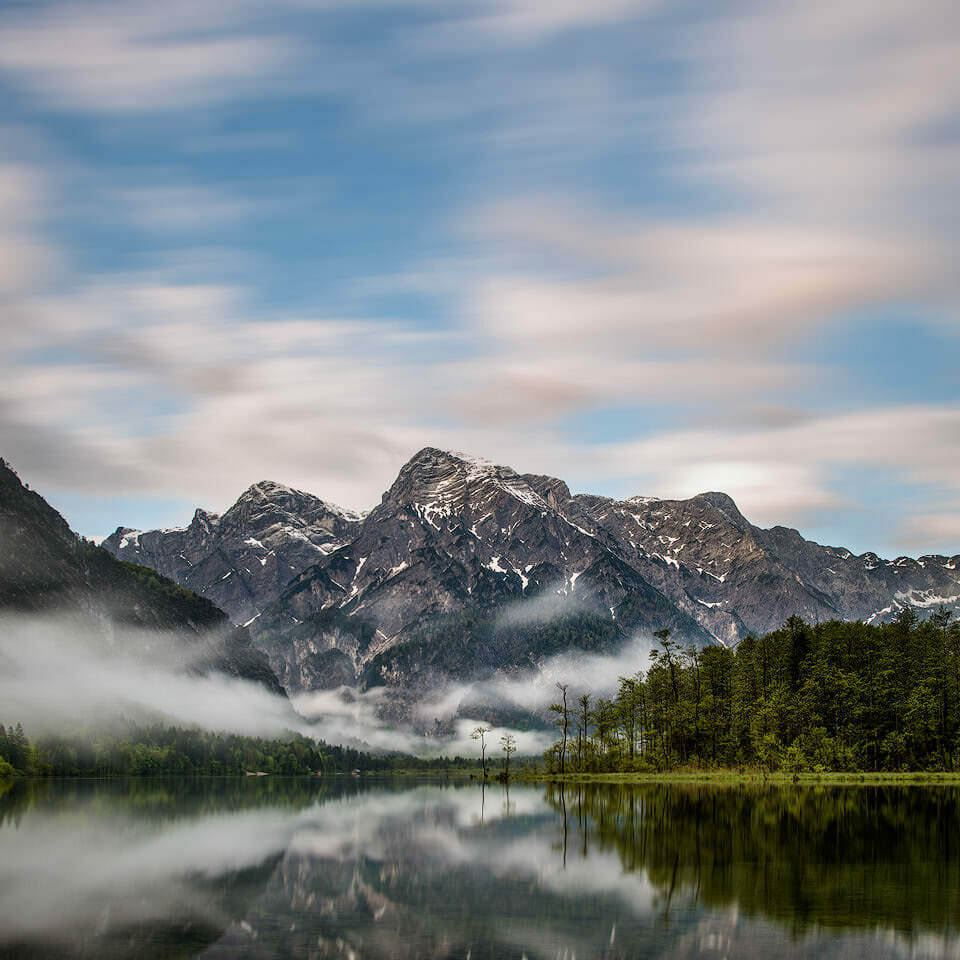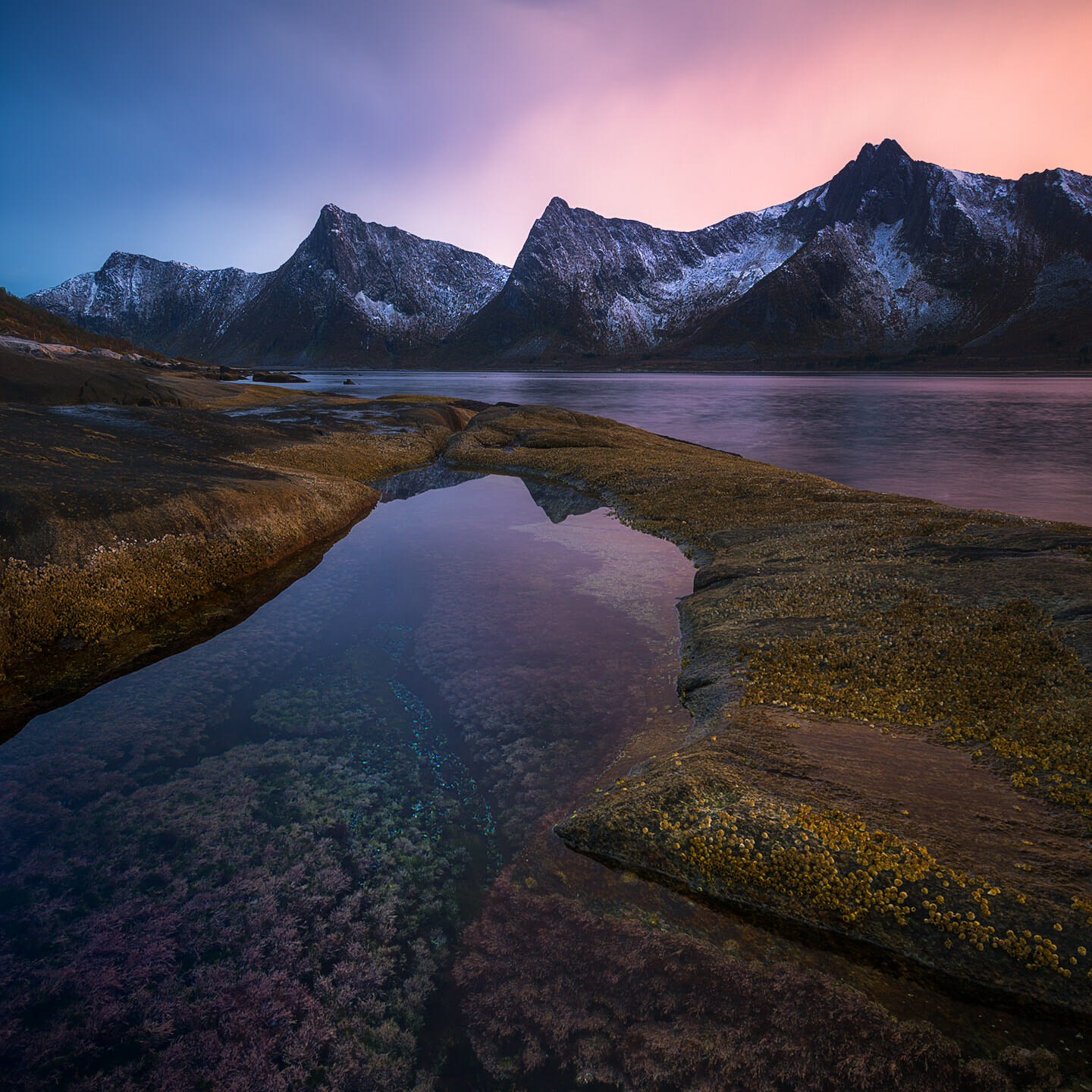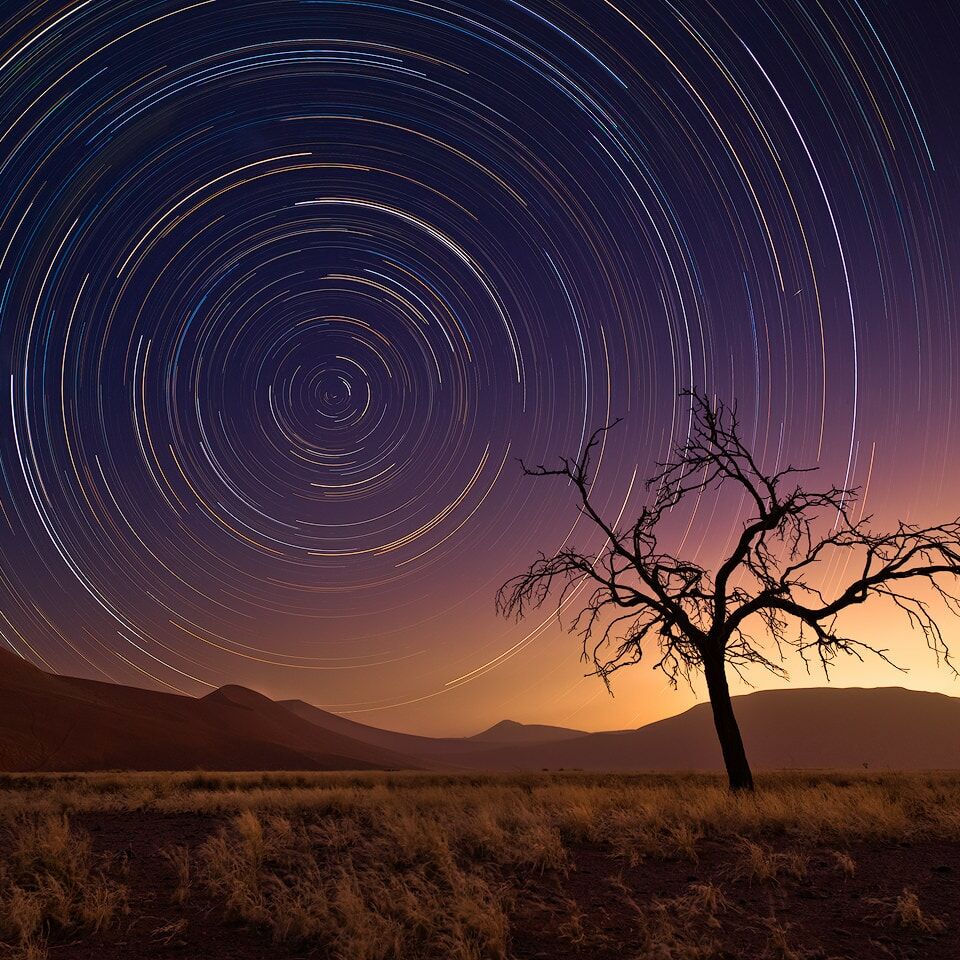We had planned to visit Iceland in June, but due to a few circumstances beyond our control we were forced to postpone our trip to September. In the end this turned out to be a good choice: less tourists and the prospect of viewing the northern lights…
After a rather bland sunset shoot at the famous Diamond Beach we went back into our campervan to eat dinner, dry our shoes and warm up before an expected cold night of Northen Lights photography. Our initial plan was to shoot the Aurora Boreals reflected in the mirror-like waters of the Jökulsárlon lagoon. From the nearest car park it’s easy to reach and offers plenty of options shooting north – this would be a sure-shot even with just a little bit of aurora activity. But as with many natural phenomena, you never know what’s going to happen and little did we know that we were about to be surprised.
Soon after we had finished dinner – it wasn’t even completely dark yet – one of us took a look out of the window and spotted the first signs of Northern Lights. We hurried to finish our beers and got dressed for a night outside. Our campervan was still parked at the western car park near the black sands of Diamond Beach and we had planned to relocate to one of the car parks at the lagoon. When we stepped out of the van I couldn’t believe my eyes. Big „strings“ of aurora were hovering exactly aboves us. They were covering the sky from east to west more or less mimicing the shape of the coastline. This was our chance: I grabbed my tripod and ran (yes, RAN) to the beach looking for chunks of ice.
The night was pitch black. The crescent moon had set together with the sun, so there was not other light source other than the greenish Aurora Borealis. It was just incredible: everchanging shapes of Northern Lights were dancing above the black sands of Diamond Beach, with it’s scattered chunks of ice glowing like Kryptonite.
Soon my boots and trousers were all wet but I didn’t care. I didn’t care about anything. In that night it was just me and my camera… and the lights… and the ice… all adding up to an incredible show, making shooting the Northern Lights at Diamond Beach by far my top photography moment of 2012.
Northern Lights at Diamond Beach near Jökulsárlón
Vatnajökull National Park
Iceland
Canon EOS 5D Mark II
Nikon 14-24mm AFS f/2.8 G ED @ 14mm, Novoflex EOS/NIK-NT
ISO 1600, f/2.8, 30 seconds
Gitzo GT1541T
19. September 2012
Night
I had read a few articles about photographing the aurora borealis and tried to be prepared as good as possible. Equipment-wise this meant I had to bring a some crucial things with me:
- tripod (as always I had my Gitzo GT1541T – but could have used something more stable)
- fast wide-angle lens (I borrowed the incredibly sharp Nikon 14-24mm f/2.8 and a Novoflex adapter to use it one my Canon)
- high ISO capable camera (my Canon EOS 5D Mark II, as usual)
- remote timer (for exposure times longer than 30 seconds and to reduce mirror shake)
- headlamp and torch (a must have for any kind of night photography)
I had had the chance to try aurora photography during the 7th and 8th night of our trip to Iceland which had helped me to get into the groove. Basically I had learned that I needed to use the lens wide-open (luckily the Nikon 14-24 is tack sharp even at it’s widest aperture of 2.8) and an ISO ranging between 800-3200, depending on the intensity of the lights and the desired shutter-speed. Longer shutter speeds (20-30 seconds) tend to render the aurora soft and blurry, while shorter shutter speeds (10 seconds and shorter) can bring out the amazing details in it.
I had also had the chance to experiment at the Jökulsárlon beach (see „Beached Jewel“) – which turned out to be really important. I had learned how the ice-blocks and waves behaved and how to move around the beach without getting too wet. Every chunk of ice is different – some were more prone to movement (bad with long exposures) than others. Watching the ice and waves for a few minutes before setting up a shot proofed to be very helpful.I still had a hard time capturing the aurora with the ice in the foreground. It was too dark to see anything in the viewfinder. I had to work very low and get close to the ice. I lit the foreground with my torch between my teeth while composing the shot. That way I was able to find a comp quite fast, but as soon as I had the camera ready the waves had moved the ice blocks in front of me and I had to start over again. The back and forth was cumbersome but giving up was no option.
I always tried to take two exposures at different focus settings (one for the foreground and one for the background) which I would later blend in Photoshop. Depending on the shape and structure of the ice I sometimes had to lengthen the exposure for the foreground to get out more details. I tried to expose-to-the-right (ETTR) to keep the noise level at a minimum (even more important when shooting at ISOs of 800 and above), but always kept an eye on the shape and movements of the aurora. When I saw interesting details I used shorter exposures times (8-10 seconds) to capture them.
At home it was just a matter of selecting the right shots and blending them. I had taken hundreds of shots but only a few of them were keepers. Apart from the blending (with the help of the photomerge function in Photoshop) the post production work was quite simple. I added contrast and a few local adjustments and applied noise reduction.
Memorial María Luisa Edition 2012 XXIII
Highly Commended in “Nature Landscapes”
Related Posts
Double Delight
04/01/2021
Timeless Blue
04/08/2013
Surreal Revelation
16/05/2013
Calm Before the Storm
16/12/2012
Related Posts
Seasons Change
21/03/2021
Below the Surface
15/11/2015
Elusive Hues
11/07/2012
A Desert’s Sky
17/06/2012








